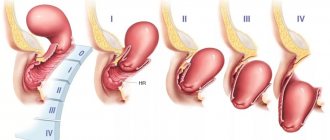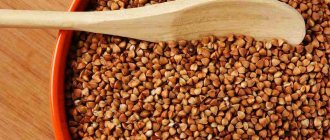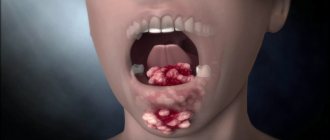Contraindications
- hypersensitivity to the components of the drug.
The drug should be prescribed with caution to patients with severe organic damage to the liver and kidneys, severe arterial hypertension, and severe atherosclerosis; patients who have previously suffered panic attacks, acute psychotic states, accompanied by psychomotor agitation (as there may be an exacerbation of anxiety, panic, hallucinations and delusions); patients prone to allergic reactions to nootropic drugs of the pyrrolidone group.
Effects of phenotropil
Why does phenotropil, aka phenylpiracetam, attract us all? Of course, it has a psychostimulating effect and improves memory! Some explained this by a certain affinity for dopamine receptors, some - to ionotropic glutamate receptors (for example, to NMDA or AMPA), but everything is much more interesting - this racetam was associated with nicotinic cholinergic receptors, which is responsible for its 2 main effects:
1) Psychostimulation - activation of nicotinic cholinergic receptors located on the surface of the dopaminergic neuron leads to the release of vesicles with dopamine. A similar process occurs outside the brain - the release of norepinephrine and adrenaline is triggered in the adrenal glands. Due to the fact that nicotinic cholinergic receptors are a “constructor” consisting of different subunits, which can be combined in different ways depending on the activity of certain genes in different populations of neurons. Phenylpiracetam had a greater affinity for H-cholinergic receptors in the brain, causing far fewer cardiovascular side effects.
2) Improving memory - in this case the mechanism is more complicated - prolonged activation of H-cholinergic receptors on the surface of glutamatergic neurons triggers an increase in the density of NMDA receptors (glutamate-dependent calcium channels), accordingly increasing the sensitivity of neurons to this excitatory neurotransmitter and “strengthening” this type of signal connections between nerve cells. This mechanism was described in the article “Phenotropil as a receptor modulator of synaptic neurotransmission” by the creator of the drug, V.I. Akhapkina, and is considered the main one.
Dosage
The dosage regimen is set individually.
Phenotropil is taken orally immediately after meals.
The average single dose is 100-200 mg, the average daily dose is 200-300 mg. The maximum daily dose is 750 mg. It is recommended to divide the daily dose into 2 doses. A daily dose of up to 100 mg should be taken 1 time/day in the morning; a daily dose of more than 100 mg should be divided into 2 doses. The duration of treatment can vary from 2 weeks to 3 months. The average duration of treatment is 30 days. If necessary, the course can be repeated after a month.
To improve performance, prescribe 100-200 mg 1 time/day in the morning for 2 weeks (for athletes - 3 days).
For nutritional-constitutional obesity - 100-200 mg 1 time/day in the morning for 30-60 days.
It is not recommended to take Phenotropil after 15 hours.
Pubmed
All information in the article is based on scientific medical materials.
PMID (from the English PubMed Identifier, PubMed ID) is a unique identification number assigned to each publication, description, abstract, or full text of which is stored in the PubMed database.
PubMed is an English-language text database of medical and biological publications created by the US National Center for Biotechnology Information (NCBI) based on the biotechnology section of the US National Library of Medicine (NLM). A key component of PubMed is MEDLINE. It was first introduced in January 1996. Available through NCBI-Entrez[en], a central search engine including PubMed, PubChem and other major medical databases. Contains approximately 25 million citations.
special instructions
It should be taken into account that with excessive psycho-emotional exhaustion against the background of chronic stress and fatigue, chronic insomnia, a single dose of Phenotropil on the first day can cause a sharp need for sleep. For such outpatient patients, it is recommended to start taking the drug on non-working days.
Use in pediatrics
Phenotropil is not recommended for use in children due to the lack of clinical data on the use of the drug in children.
Experimental results
Phenotropil is characterized by low toxicity, the lethal dose in an acute experiment is 800 mg/kg. Does not have a carcinogenic effect.
Termination of production of phenotropil
Many of you are faced with the impossibility of purchasing such an effective nootropic as Phenotropil in pharmacies. This is due to the cessation of its production by Valenta-Pharm due to patent disputes with the inventor, Valentina Akhapkina. Her plans were to expand the field of application of the drug and introduce new dosage forms (including injections), but the manufacturing company refused this. Phenotropil produced by Akhapkina’s own company (Vira Innfarm) is not yet available for purchase. The Baltic generic is also currently unavailable.
Fenotropil®
Nootropic drug. It has a pronounced anti-amnesic effect, activates the integrative activity of the brain, promotes memory consolidation, improves concentration and mental activity, facilitates learning processes, accelerates the transfer of information between the hemispheres of the brain, increases the resistance of brain tissue to hypoxia and toxic effects, has an anticonvulsant effect and anxiolytic activity , regulates the processes of activation and inhibition of the central nervous system, improves mood.
Phenotropil® has a positive effect on metabolic processes and blood circulation in the brain, stimulates redox processes, increases the body's energy potential through glucose utilization, and improves regional blood flow in ischemic areas of the brain. Increases the content of norepinephrine, dopamine and serotonin in the brain.
Does not affect the level of GABA content, does not bind to GABAA and GABAB receptors, and does not have a noticeable effect on the spontaneous bioelectrical activity of the brain.
Phenotropil® has no effect on the respiratory and cardiovascular systems. Has a mild diuretic effect. It has anorexigenic activity when used as a course.
Phenotropil® has a moderate activating effect on motor reactions, increases physical performance, has pronounced antagonism against the cataleptic effect of neuroleptics, and reduces the severity of the hypnotic effect of ethanol and hexenal.
The psychostimulating effect of Phenotropil predominates in the ideational sphere. The moderate psychoactivating effect of the drug is combined with anxiolytic activity. Phenotropil® improves mood, has an analgesic effect, increasing the threshold of pain sensitivity.
Phenotropil® has an adaptogenic effect, increasing the body's resistance to stress under conditions of increased mental and physical stress, fatigue, hypokinesia and immobilization, and low temperatures.
With the use of Phenotropil, there is an improvement in vision (increased sharpness, brightness and fields of vision).
Phenotropil® improves blood supply to the lower extremities.
Phenotropil® stimulates the production of antibodies in response to the introduction of an antigen, which indicates its immunostimulating properties, but at the same time does not cause the development of immediate hypersensitivity reactions and does not change the allergic inflammatory reaction of the skin caused by the introduction of a foreign protein.
With a course of use of Phenotropil, drug dependence and tolerance do not develop. When discontinuing the drug, no withdrawal syndrome was observed.
The effect of Phenotropil appears after a single dose, which is important when using the drug in extreme conditions.
Analogs
How can you recreate these effects of phenylpiracetam? There are several approaches - one of them is taking drugs with a similar pharmacodynamic profile, i.e. common targets for binding. For example, choline alphoscerate (alpha-GPC) - in addition to being a precursor in the biosynthesis of acetylcholine, it itself can bind to nicotinic cholinergic receptors. Many of those who took it reported psychostimulant properties. A bonus is an increased feeling of satiety when smoking - sometimes this substance is used in schemes to quit cigarettes and reduce pack-days. In addition, unlike phenylpiracetam, which, being a domestic drug, unfortunately, has poorly realized potential, dosage regimens and possible prescriptions for a-GPC have been quite well researched and described by international teams of doctors. This substance also has a very interesting feature, discovered, oddly enough, by sports doctors (PMID: 29042830) - it increases muscle strength, as shown in jumping tests. In addition, a-GPC has been found to have another property that many amateurs (and professionals) will appreciate in controlling their body - it is currently considered as a powerful geroprotector (PMID: 29191088)! Mainly, the substance slows down the accumulation of amyloidogenic proteins in the brain and reduces chronic inflammatory processes in the nervous system.
Alpha GPC
1999 rub.
Another approach to replacing phenylpiracetam is to recreate its effects, but through the activation of other mechanisms regulating the functioning of our brain. Many people like the stable “working” mood that is felt in the middle of the Phenotropil course. For this case, sulbutiamine, a dimer of thiamine (vitamin B1), will be effective. Unlike regular thiamine, the dimer is a more lipophilic molecule that penetrates the tissues of the nervous system more easily and has the ability to cumulate (i.e., store). First of all, let's look at its mechanism of action: it only partially breaks down into thiamine (whose beneficial effects are undeniable, not insufficient per se for a strong mood lift), the dimerized molecule itself is capable of saving neurons by preventing apoptosis - it is known that not only a decrease in low molecular weight neurotransmitters, but also important neurotropic factors (NGF, BDNF), which entails not only a decrease in mood, but also in cognitive abilities and memory. Experiments have shown that with a low level of neurotropic factors, the nerve cell is not only incapable of restructuring contacts (synaptic plasticity), but can go into apoptosis. Sulbutiamine blocks this effect, preventing neurons from reducing their activity when the level of neurotrophins is reduced - “Sulbutiamine counteracts trophic factor deprivation induced apoptotic cell death in transformed retinal ganglion cells.” In addition, earlier studies have shown improvements in long-term memory when taking sulbutiamine, but again, this effect is still tied to the cholinergic signaling system. The experiment showed an increase in the activity of the corresponding structures of the hippocampus by 10% - “Chronic administration of sulbutiamine improves long term memory formation in mice: possible cholinergic mediation.”
A separate bonus for athletes will be an article by Rodchenkov (yes, the same analytical chemist who was involved in sample analysis before the anti-doping scandal) in Drug Testing and Analysis, which provides statistics on the use of sulbutiamine by athletes. Unfortunately, as of 2009 (statistics publication), this substance was little known in Russia, and its stimulating ergogenic (increasing physical performance) properties were just beginning to find recognition. Ray Energy
449 rub.
There is also a third approach, if you are faithful to the drugs of the racetam class - taking pramiracetam and aniracetam together. These drugs improve memory, but in slightly different ways - by increasing the activity of neuronal NO synthetase, and, in the case of pramiracetam, they slightly “repeat” the effect of phenotropil, being allosteric modulators of AMPA receptors. These receptors are also ionotropic glutamate receptors, but in this case it is not so much their density that increases as the sensitivity of the receptor complex itself. In total, these effects reproduce (and in some ways even exceed) the ability of phenotropil to improve memory.







